Pradhan Mantri Fasal Bima Yojana: Guide to India’s Crop Insurance Scheme

Introduction
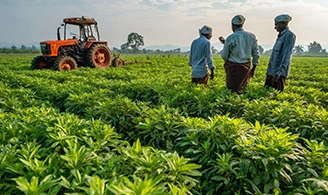
Agriculture is often called the backbone of India’s economy, employing nearly half of the population and feeding over 1.4 billion people. However, farming in India comes with enormous risks. Farmers are constantly vulnerable to unpredictable weather conditions, pest attacks, crop diseases, and natural calamities like floods, droughts, and hailstorms. A single season’s crop failure can push farming households into debt traps, making their livelihoods uncertain.
To address this issue, the Government of India launched the Pradhan Mantri Fasal Bima Yojana (PMFBY) on 18th February 2016. Designed and implemented by the Department of Agriculture, Cooperation and Farmers’ Welfare, under the Ministry of Agriculture, PMFBY is a landmark crop insurance scheme. The initiative provides financial protection to farmers against crop loss due to natural disasters, pests, and diseases, while ensuring affordable premiums.
Over the years, PMFBY has expanded significantly, covering over 50 crore farmers and providing insurance protection to more than 50 different crops. Implemented through a network of insurance companies and banks, it is now one of the largest crop insurance programs in the world.
This blog presents a comprehensive guide to PMFBY, covering its objectives, benefits, risks covered, eligibility, exclusions, application process, documents required, and challenges.
Objectives of PMFBY
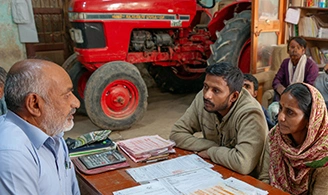
PMFBY is not just about insurance—it aims to transform the way Indian agriculture deals with risk. Its objectives include:
- Providing Financial Assistance: Farmers suffering from crop damage or loss due to unforeseen events receive timely financial aid.
- Stabilising Farmers’ Income: Ensures continuity in farming by minimizing the adverse impact of crop failures.
- Encouraging Modern Agricultural Practices: By reducing risk, farmers are more likely to adopt innovative and scientific farming methods.
- Ensuring Crop Diversification: Helps farmers move beyond traditional crops to more remunerative options.
- Improving Credit-Worthiness: With insurance backing, farmers are considered more creditworthy, which enhances access to institutional loans.
- Enhancing Competitiveness of Agriculture: Protecting farmers from production risks ultimately strengthens India’s agricultural sector.
Benefits of PMFBY
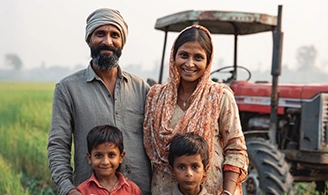
The scheme has been carefully designed to make crop insurance accessible, affordable, and farmer-friendly. Some of its major benefits include:
- Affordable Premiums
- Kharif crops (food & oilseeds): Farmers pay only 2% of the sum insured.
- Rabi crops (food & oilseeds): Farmers pay 1.5% of the sum insured.
- Commercial & horticultural crops: Farmers pay 5% of the sum insured.
The balance is subsidized by the central and state governments.
For North-Eastern states, Jammu & Kashmir, and Himachal Pradesh, the government pays the entire premium, ensuring 100% free coverage for farmers in these regions.
- Comprehensive Coverage
The scheme covers:
- Natural disasters like floods, droughts, hailstorms, and cyclones.
- Pest infestations and crop diseases.
- Post-harvest losses due to localized events such as landslides or cyclonic rains.
- Timely Compensation
The scheme promises claim settlement within two months of harvest, helping farmers avoid debt and financial distress.
- Technology-Driven Implementation
PMFBY integrates modern tools like:
- Satellite imagery for monitoring.
- Drones for precise damage assessment.
- Mobile applications for faster reporting.
This improves transparency and ensures accurate claim settlements.
Risks Covered
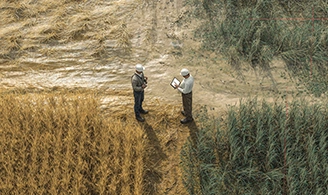
PMFBY covers a wide range of agricultural risks, making it one of the most comprehensive crop insurance schemes globally.
- Yield Losses (Standing Crops)
Farmers are protected against non-preventable risks such as:
- Natural fire and lightning.
- Storms, hailstorms, cyclones, tornadoes.
- Floods, inundation, and landslides.
- Drought and dry spells.
- Pests and crop diseases.
- Prevented Sowing/Planting
If adverse weather prevents sowing, insured farmers in notified areas are eligible for indemnity claims of up to 25% of the sum insured.
- Post-Harvest Losses
Coverage is provided for up to 14 days post-harvest when crops stored in the field (“cut and spread” condition for drying) are damaged by cyclones or unseasonal rains.
- Localised Calamities
Individual farm-level coverage is offered against risks such as:
- Hailstorms.
- Landslides.
- Floods and inundation affecting specific fields.
Eligibility Criteria
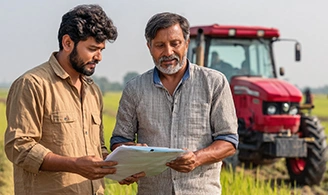
PMFBY has been designed to cover all farmers, regardless of landholding size. The eligibility rules include:
- All farmers, including tenant farmers and sharecroppers, growing notified crops in notified areas can apply.
- Farmers must have an insurable interest in the insured crops.
- Possession of valid land ownership records (Record of Rights, Land Possession Certificate) or a valid land tenure agreement is required.
- The applicant must be the cultivator, tenant, or sharecropper on the land.
- Farmers must apply within the prescribed time frame, usually within 2 weeks of sowing season start.
- Farmers who have already received compensation for the same crop loss from another source cannot claim again under PMFBY.
Exclusions

Not all crop losses are covered under PMFBY. Exclusions include:
- Non-Notified Areas: Coverage applies only in notified areas declared by the state government.
- Losses Outside Crop Cycle: Events not directly linked to the growing season are excluded.
- Farmer Negligence: Losses caused by negligence or non-compliance with recommended agricultural practices.
- Losses Beyond Specified Limits: Only losses meeting the scheme’s threshold criteria are compensated.
- Non-Payment of Premium: Farmers who fail to pay the premium are not eligible for benefits.
Application Process

Farmers can apply online, offline and online via Common Service Centers (CSCs)
Online Application (via CSCs or Website)
- Visit the Official Website: pmfby.gov.in.
- Farmer Corner: Click “Farmer Corner” → “Guest Farmer” for new registration.
- Fill Registration Form: Provide personal details, land ownership proof, bank details, and ID proof.
- Create User Account: Submit the form with captcha verification.
- Login: Use registered mobile number and OTP to log in.
- Fill Application Form: Enter crop details and upload documents.
- Payment: Choose “Pay Later” or “Make Payment.”
- Receipt & Confirmation: Print payment receipt for records.
Track Your Application
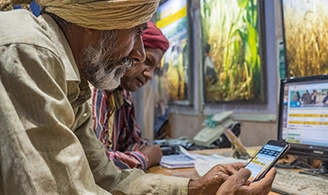
- You can track the application status on the PMFBY website through the ‘Application Status’ option on the home page.
Offline Application
Farmers can also apply at:
- Banks (where they hold accounts).
- Common Service Centers (CSCs).
- Local insurance company offices.
Offline Application Process:
- The interested applicant should visit the nearest participating bank or insurance office, and request the prescribed format of the application form from the staff.
- In the application form, fill in all the mandatory fields, paste the passport-sized photograph (sign across, if required), and attach copies of all the mandatory documents (self-attest, if required).
- Submit the duly filled and signed application form to the staff, along with the attached copies of the documents. Pay the applicable premium amount at the office.
- You will be provided with an application reference number which you can use to track the status of your application.
Track Your Application
- You can track the application status on the PMFBY website through the ‘Application Status’ option on the home page.
Track Application
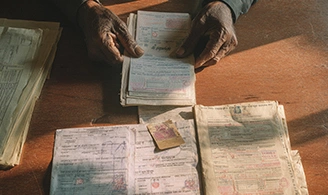
Applicants can check claim and enrollment status via the “Application Status” section on the PMFBY website.
Online Application via Common Service Centers (CSCs)
- Visit your nearest Common Service Centre (CSC). CSCs are government-authorized centres that provide various services to citizens.
- Inform the Village Level Entrepreneur (VLE) at the CSC that you intend to apply for PMFBY. Inform the VLE if you need assistance/guidance with the application or if you want the VLE to apply for the scheme on your behalf.
- Provide the VLE with the information on the mandatory fields and soft copies of the required documents.
- Upon successful submission of your application, pay the applicable premium amount to the VLE. The premium amount may vary depending on the crop, area, and other factors.
- Receive an acknowledgement receipt from the VLE as proof of application submission.
Track Your Application
You can track the application status on the PMFBY website through the ‘Application Status’ option on the home page.
* Keep copies of all documents submitted and the acknowledgement receipt for future reference.
* Note down the contact details of the CSC centre for any queries or assistance.
Documents Required

Farmers need to keep the following documents ready:
- Passport-sized photograph.
- Bank passbook.
- Identity proof: Aadhaar card, PAN, voter ID, Kisan card, or NREGA job card.
- Address proof: Aadhaar, PAN, voter ID, electricity bill, or passbook with photo.
- Land records: Record of Rights (RoR), Land Possession Certificate (LPC), or tenancy agreements.
- Declaration of crops sown or intended to be sown.
Technology in PMFBY
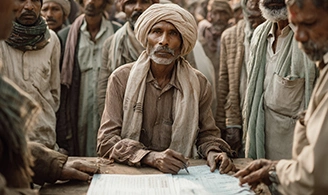
A standout feature of PMFBY is its technology-driven monitoring and settlement. The government has integrated:
- Satellite-based yield estimation.
- Mobile apps for crop-cutting experiments.
- Drone surveillance for field-level accuracy.
This ensures fairness, reduces disputes, and accelerates the claim process.
Challenges in Implementation
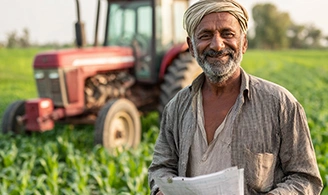
Despite its success, PMFBY faces challenges:
- Delayed Claim Settlements: Farmers often report delays beyond the promised 2-month window.
- Awareness Gaps: Many farmers in remote areas are unaware of scheme details or timelines.
- State-Level Variations: Not all states actively implement or renew PMFBY due to financial constraints.
- Farmer Trust Issues: Some farmers feel payouts are insufficient or not timely.
- Complex Procedures: For small farmers, documentation can be a hurdle.
Impact of PMFBY

Since its launch, PMFBY has:
- Enrolled millions of farmers into the insurance net.
- Provided protection against unpredictable weather risks.
- Increased credit flow to farmers by making them more financially secure.
- Helped promote modern agricultural practices by lowering risk perception.
Future of PMFBY

For PMFBY to achieve its full potential, the following steps are necessary:
- Simplify claim procedures further to ensure real-time payouts.
- Expand awareness campaigns in regional languages.
- Strengthen state participation with better central support.
- Enhance digital infrastructure for faster assessments.
- Introduce customized policies for smallholder farmers.
Conclusion
The Pradhan Mantri Fasal Bima Yojana is more than just a crop insurance scheme—it is a safety net for millions of Indian farmers. By providing financial protection, stabilizing incomes, and encouraging modern agricultural practices, PMFBY plays a crucial role in safeguarding India’s agricultural sector.
While challenges remain, the scheme’s scale, affordability, and technology-driven approach make it a cornerstone of rural development. For farmers battling uncertainties of nature, PMFBY represents not just insurance—but hope, security, and a chance to continue farming with dignity.
















